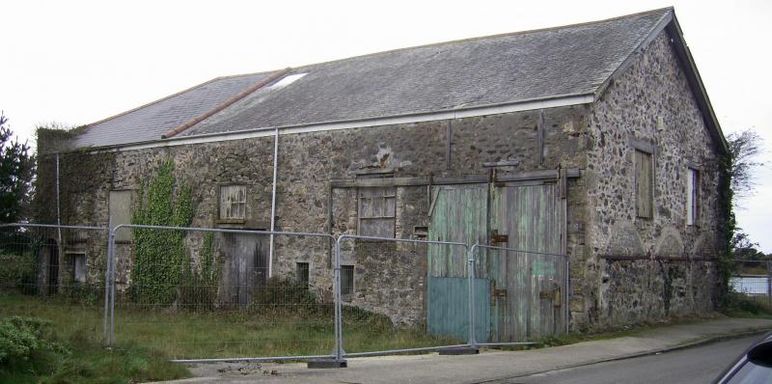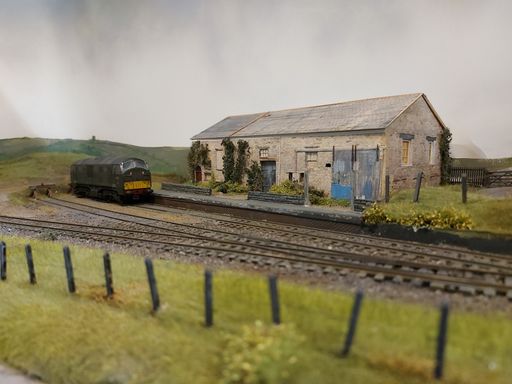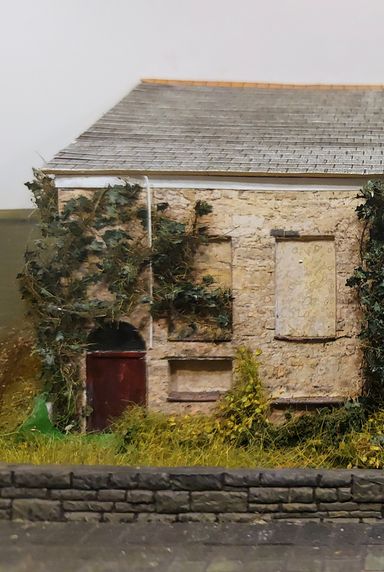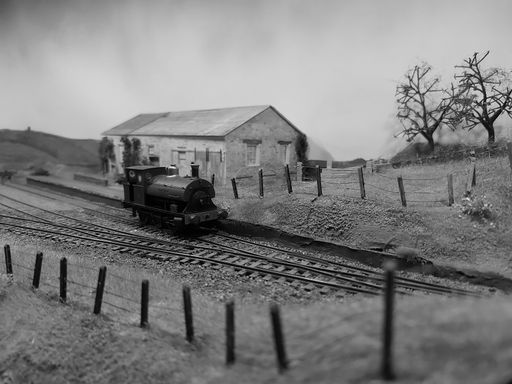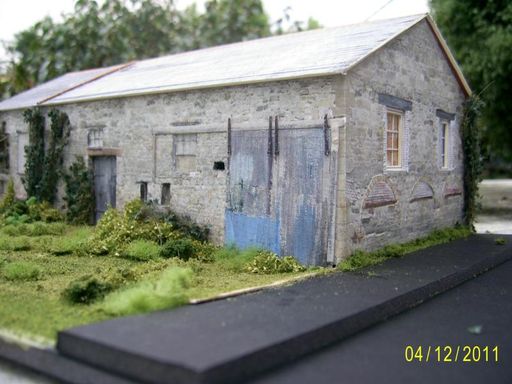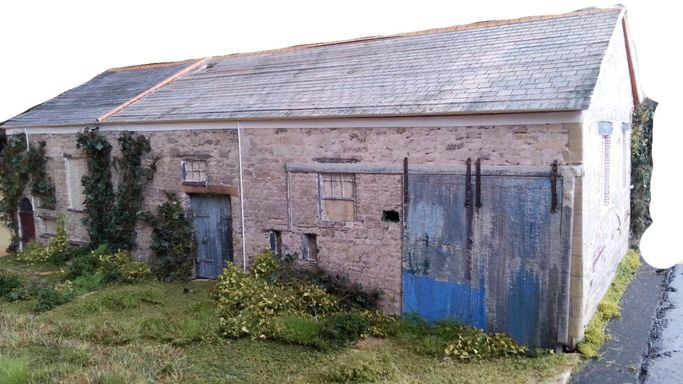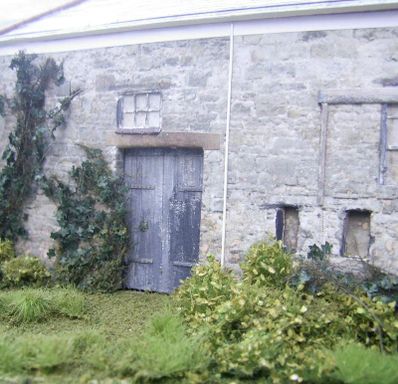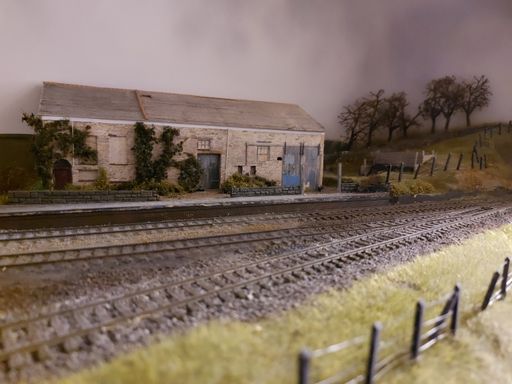Tinner's Forge
My signature building, this old stone forge has been with me for several years and now takes pride of place on my Tinner's Forge layout.
It has an unusual set of arches in the end wall, a large sliding wooden door and various other doors & windows. The chimney is long gone, and the actual building is looking worse and worse each time I go back.
The model is card with Scalescenes brick paper covering, with various pieces of plastic strip to provide the detail.

